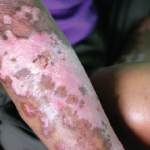During my fellowship, Mary Betty Stevens, MD, was brilliant and nurtured my career.
During my faculty years, the major (among many) mentors have been my colleague in pulmonary medicine, Robert Wise, MD, and my first postdoctoral fellow, Antony Rosen, MBChB, MS, who is a superb leader and basic scientist and a world-class clinician.
TR: What habits can a fellow in training or junior rheumatologist incorporate into daily practice to build their skills as a clinician?
Dr. Wigley: Today, the physician is burdened not only with making sure the quality of information is good, but also with entering volumes of data into the computer. This is occurring with increasing demands for care and stress to act quickly. The time we spend with direct patient care is shrinking as we are consumed by data collection and documentation. The time with our eyes on the computer far outweighs the time we have for the patient. While there is incredible potential for integrating comprehensive, paperless information and data collected into our patient care, the technology is moving faster than the research to provide evidence that it makes a difference.
We need to recognize that escaping old ideas and methods is very hard to do and one should not get stuck in their internship mode. Rather, many old principles are essential to treasure:
- Allow time for your senses to be used during each encounter to characterize the patient.
- Listen carefully and focus on body language as the patient relates his or her problems.
- Guide the patient with questions to unearth symptoms and signs.
- Allow time for the patient to have an exam that is designed to address the problem and, yet, have a routine system to explore unexpected signs and clues.
- Take time to stop and think, remembering your limitations and the need to consult with others and to double check plans and interventions.
- Never accept a rumored diagnosis; convince yourself the evidence is solid (e.g., review labs, images and pathology yourself), and recognize the complex biological networks that may influence your therapy (e.g., age may influence responses).
- Make sure you ask patients how they are coping and that they understand the plan. Our goal is not only to treat the patient’s disease, but to also improve their quality of life as they experience it.
- Communicate carefully in an unrushed manner during the visit, but also provide ways for the patient to ask for help anytime.
- Finally, follow up. The answer to the problem and the response to your intervention often is revealed in the chapters that unfold before you and help tell the story and solve mysteries.
TR: What lessons have you learned from patients that have contributed to your own growth as a clinician?



